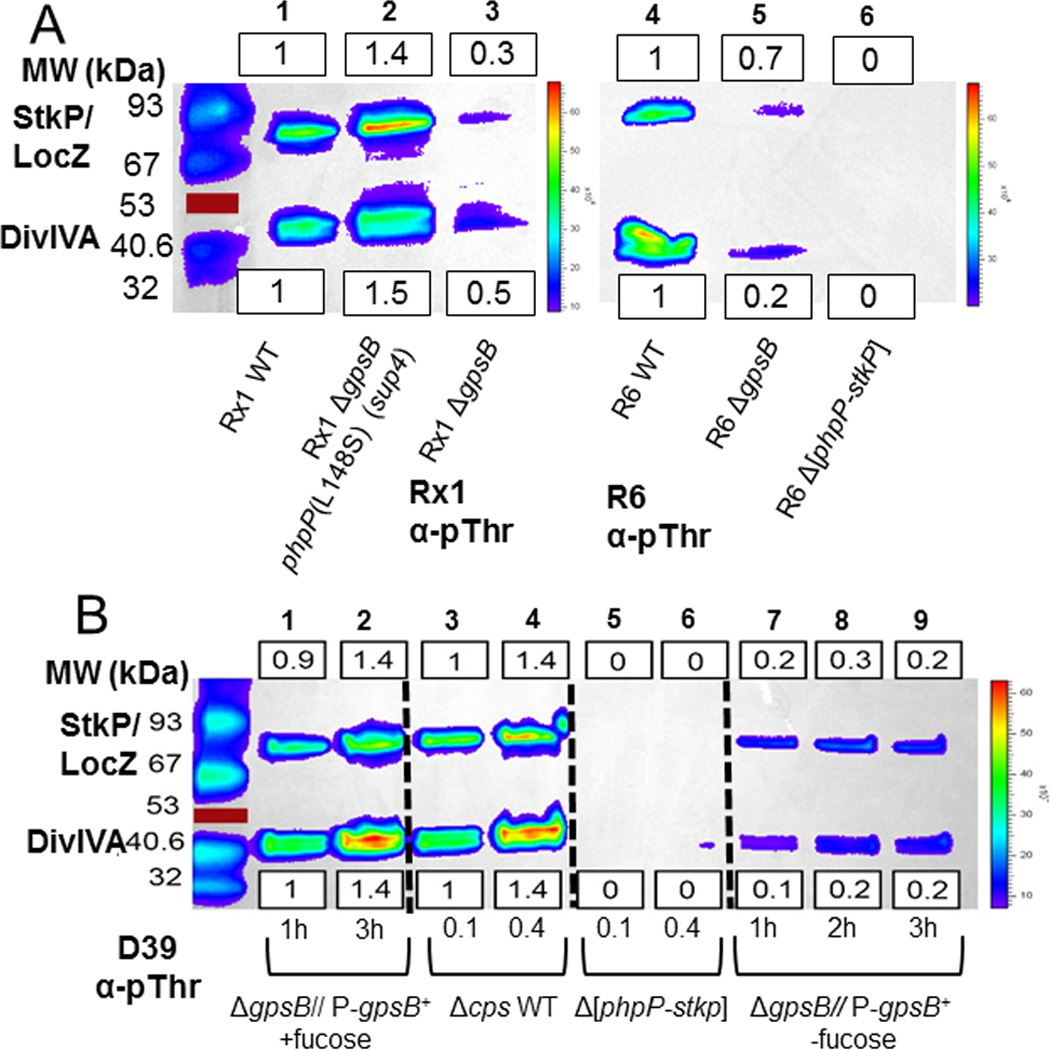Fig. 2.

GpsB deletion or depletion results in decreased threonine (Thr) phosphorylation of proteins. Proteins phosphorylated on Thr residues were detected by Western blotting with α-pThr antibody, and blots were imaged and quantitated as described in Experimental procedures. Equal protein loading was confirmed by amido-black staining of membranes after blotting. Representative blots are shown, with background-subtracted luminescence values relative to the wild-type (wt) strain indicated for the StkP/LocZ and DivIVA bands in boxes above or below the blots, respectively. Relative values of band intensities were calculated as described in Experimental procedures, and mean relative intensities (±SEM) are compiled for all experiments in Table S5 and S6. A) ΔgpsB mutants of laboratory strains Rx1 and R6 harvested at OD620 ≈ 0.4. Lane 1, wild-type Rx1 parent (IU9256); lane 2, suppressed Rx1 ΔgpsB phpP(L148S) (IU9262); lane 3, Rx1 ΔgpsB phpP+ stkP+ (IU11574); lane 4 wild-type R6 parent (EL59); lane 5, R6 ΔgpsB (IU8224); and lane 6, R6 Δ[phpP-stkP] control (IU8419). The experiment was performed twice independently with similar results. B) GpsB depletion of D39 Δcps strains as described in Experimental procedures. Lane 1–2, merodiploid strain Δcps ΔgpsB//PfcsK-gpsB+ (IU4888) grown with fucose for the times indicated; lane 3–4, wild-type parent strain D39 Δcps (IU1945) grown to OD620 ≈ 0.1 or 0.4; lanes 5–6, D39 Δcps Δ[phpP-stkP] (E739), and lanes, 7–9, merodiploid strain Δcps ΔgpsB//PfcsK-gpsB+ (IU4888) incubated without fucose for the times indicated. The experiment was performed three times independently with similar results. See text for additional details. Red lines marks a colored 53 kDa standard that did not transfer.
